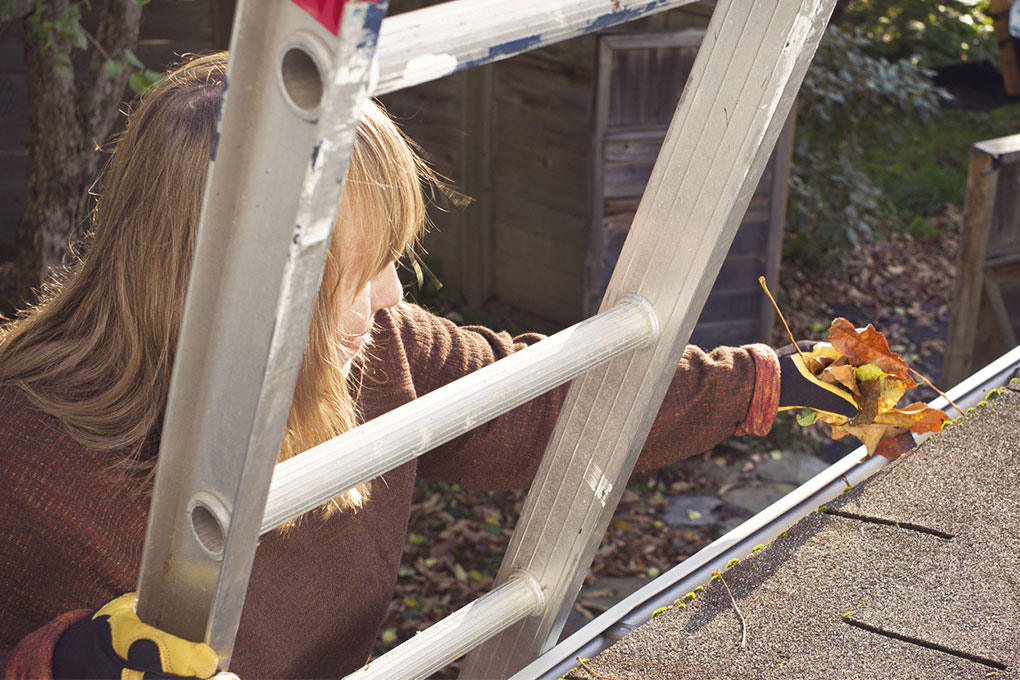Exterior insulation
The exterior of the house is put to the test in winter, so that’s where you’ll need to turn your attention. Pay particular attention to the caulking around your windows and doors; it needs to stay soft to block air and humidity from getting in.
“To check this, make sure you can easily insert a flat-head screwdriver or a dime,” recommends Alain Paquette. “If it’s gotten hard or dried out by the sun, it’s time to change it. Elasticity is critical to keeping the seal while materials shift with freezing and unfreezing.”
It’s also a good idea to check your weather-stripping – those strips of rubber that cover the gap between the fixed and moving parts of your doors and windows. If they’ve lost their flexibility, or are cracked or coming unglued… Change them!
Interior outlets installed in exterior walls could also allow air to seep in. “Remove the plastic faceplate and fill the space with an inexpensive foam insulation from the hardware store, then put the faceplate back on. And that’s it!” says Paquette.
Result: You’ll save a few dollars during the coldest months of the year. Heating represents more than 50% of your annual electricity bill. In addition, warm air escaping and cold air getting in represent up to 25% of a house’s heating loss.
The foundation
Before the snow comes, walking the perimeter of your house to inspect the foundation is a must. If you see a crack, it’s time to take action.
“Don’t wait – call a company that specializes in foundations. They’ll need to come in and thoroughly seal the crack,” states Alain Paquette. If water infiltrates then freezes, the crack could expand and cause even more damage. For example, if it reaches wood, mould could grow.”
Result: By acting fast you can avoid major work that could cost thousands of dollars.
The roof
The roof is another extremely important element of the home that you’ll need to look at… Carefully!
“If you have a flat roof with a membrane, make sure there are no weak points, like air bubbles,” Alain Paquette points out. “If you have shingles, make sure they’re in good shape.” It’s equally important to remove any branches or debris that might have accumulated during the summer.
Result: Proper maintenance can allow you to reduce the risk of water infiltration through the roof and avoid significant damage to the interior of the residence.
The chimney
The chimney also needs to be inspected. Its caulking should be soft and intact. If that’s not the case, change it.
“You should also make sure that the liner is in good shape, that there aren’t any birds nests on the chimney and that it’s covered with a cap,” Paquette insists.
In addition, the chimney needs to be swept every year.
“Even if you only use your fireplace a couple of times a year,” Paquette asserts. “Otherwise the soot hardens and it becomes far more difficult to clean.”
Result: An annual sweeping prevents soot from building up and so reduces the risk of fire. The chimney cap is important to avoid water coming in and damaging the lining of the chimney.
Drainage systems
Before you get down from the roof, clean the leaves from the gutters, make sure they are properly attached to the house, and make sure water can drain well.
Once you’re back on solid ground, look at the edges to make sure they aren’t obstructed by leaves or earth that would impede drainage.
You’ll also want to clean the drain in the floor of the garage, which is often full of gravel, then head down to the basement to test the sump pump.
“I would even suggest testing it every month by pouring in a good litre of water, which will allow the mechanism to start up and allow you to ensure that water is being properly drained.”
Result: A functional sump pump can make all the difference to your home and your belongings in case of flooding. You won’t be taken by surprise if we’re hit by a particularly wet spring.
Garden hose and irrigation system
Finally, you know winter is coming when the last flowers in the garden give in to the cold. It’s time to empty the garden hose to avoid water freezing inside and causing cracks.
Do you have an irrigation system for your flowerbeds? You’ll have to get all the water out of that as well, using an air compressor.
Result: Neglecting to clean out your irrigation system could cost you a pretty penny come spring if you have to dig up your whole flowerbed to change a split hose, then redo your garden. Time and money that would definitely be better spent elsewhere during those first beautiful days of spring!
Until then, get to work!
